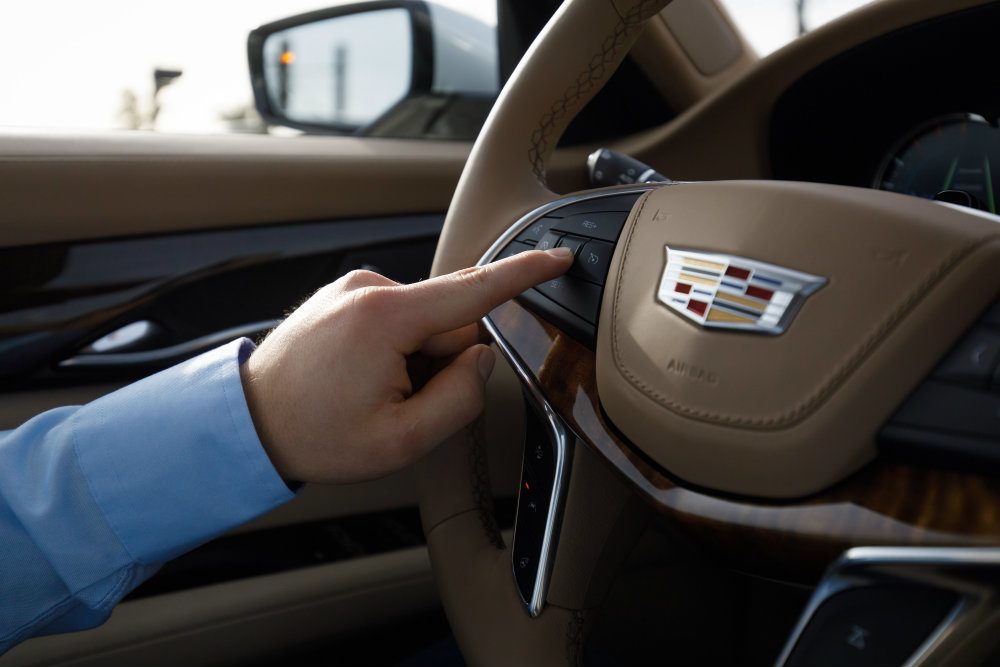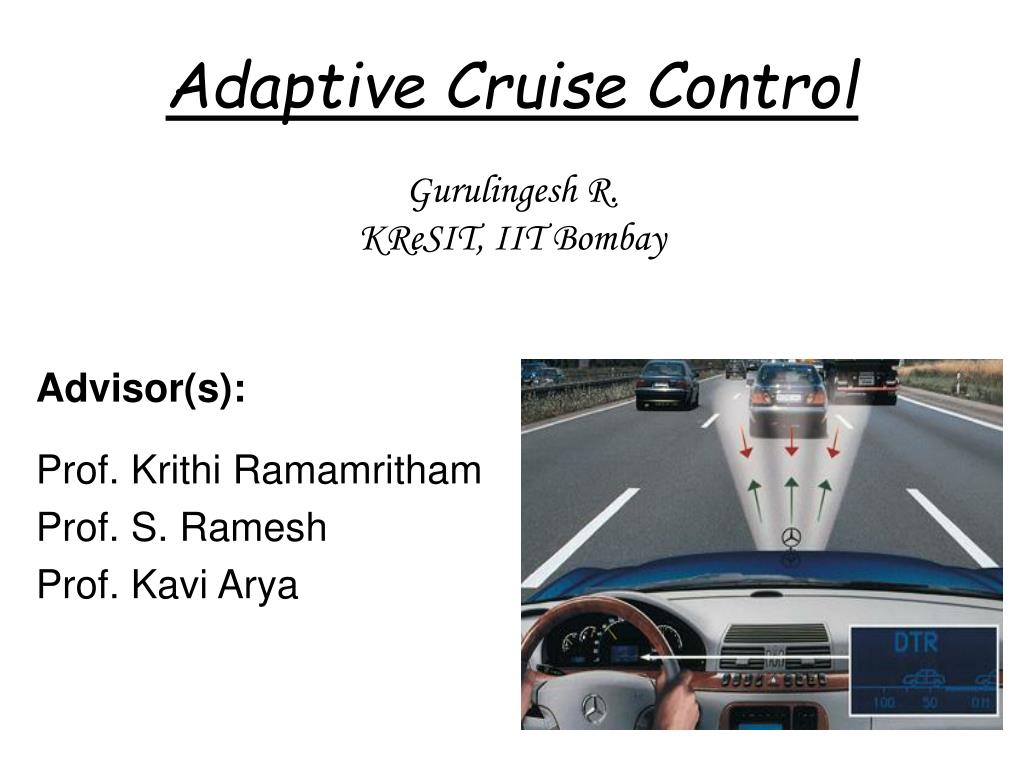How to Use Adaptive Cruise Control Vehicle Support
Table Of Content

For very brief stops, Adaptive Cruise Control will automatically resume and follow the vehicle ahead. Such systems may use a radar, laser sensor or a camera setup allowing the vehicle to brake when it detects the car is approaching another vehicle ahead, then accelerate when traffic allows it to. As stated earlier, some systems will bring your vehicle to a complete stop to match traffic flow. Even more intelligent systems can then accelerate as the traffic flow resumes. These are called assisting, predictive, and multi-sensor systems. “Most ACC systems can only be set to speeds above 20 mph but will slow the vehicle to speeds below that in stop-and-go traffic,” she says.
Honda Adaptive Cruise Control (ACC) with Low-Speed Follow

Adaptive Cruise Control should not be used while towing a trailer with an aftermarket trailer brake controller. Aftermarket trailer brake controllers may not function properly with the Adaptive Cruise Control system. Adaptive Cruise Control has limited braking capability, so if the vehicle you’re following stops too suddenly, you’ll get an alert to take action by quickly applying the brakes yourself. With so many automakers offering ACC, it‘s now an expected convenience feature for car buyers. Radar ACC is the most common since it combines long range, wide scanning angle, with reasonable cost.
ACC Sensor Technology – Radar vs. Laser vs. Camera
When the road ahead is clear, ACC automatically accelerates to your pre-set speed. Adaptive Cruise Control is an advanced driver assistance feature that automatically adjusts your vehicle’s speed to maintain a safe distance from the vehicle in front. Unlike traditional cruise control that maintains a constant speed, ACC can speed up or slow down based on the flow of traffic. While it’s a step up in terms of driving automation, for safety, a human driver is still required to supervise constantly, including steering, braking, or accelerating.
Data Availability Statement
When towing a trailer, Adaptive Cruise Control driving characteristics, such as following gap, acceleration rates and braking rates, may be modified to provide a better towing experience. Keith Barry has been an auto reporter at Consumer Reports since 2018. He focuses on safety, technology, and the environmental impact of cars. Previously, he led home and appliance coverage at Reviewed; reported on cars for USA Today, Wired, and Car & Driver; and wrote for other publications as well.
They work individually and sometimes in concert with each other to continually scan the road ahead of you for vehicles, obstacles, and changes in traffic flow. ACC uses a combination of radar, cameras, and various other sensors to monitor the distance to the vehicle ahead and its relative speed. This data is processed by the car’s computer systems to adjust the throttle and apply brakes if necessary, ensuring a safe following distance. ACC is a major component and precursor of fully autonomous vehicles.
For example, Tesla’s Enhanced Autopilot, Ford’s BlueCruise, the Mercedes Drive Pilot, and General Motors’ Super Cruise bring the potential for Level 3. A few over-the-air software tweaks will turn the potential into reality. However, like a stood-up date who is all dressed up with nowhere to go, you will not find Level 3-designated highways as of yet. Many vehicle owners are familiar with cruise control, and this basic technology is offered on most vehicles today. This simple technology allows you to set the speed you want your vehicle to travel, and it will speed up your ride to keep you at the proper speed as you travel over different road conditions.
Back to Driver Assistance

On properly equipped 2024 model year vehicles, you can set an Adaptive Cruise Control speed while you’re stopped (the system must be on, you must apply the brake pedal and your vehicle must be in a forward gear). One of the main issues with using ACC is that there isn’t one uniform system in place across all car makes and models, so drivers may need to learn a new car’s system each time. If the car in front of you slows down, your car will either slow down to maintain the gap you set, or alert you to apply the brakes – which then deactivates the ACC system. Once you’ve set your speed, you can set the gap you wish to maintain from the car ahead using the relevant buttons, which will either be given in seconds or metres, depending on your vehicle. In cars that feature ACC, either a laser or radar system is mounted within the front of the car that constantly scans the road ahead of you for other vehicles. The big challenge is mastering full self-driving in complex urban environments.
Which cars have adaptive cruise control?
IIHS: Drivers pick speeds over limit when using adaptive cruise control - Repairer Driven News
IIHS: Drivers pick speeds over limit when using adaptive cruise control.
Posted: Fri, 30 Apr 2021 07:00:00 GMT [source]
Adaptive cruise control systems vary in sophistication from carmaker to carmaker and sometimes even model to model. For example, Genesis calls it Smart Cruise Control, while BMW identifies it as Distance Control. However, in a nutshell, the feature holds a safe preset speed while maintaining a safe following distance from the traffic before it. The cruise control tool will automatically slow you down if someone ahead of you slows down. When that person speeds back up, the cruise goes up to its set speed. This feature makes driving on the highway simpler and less annoying.
Drivers Don't Understand How Adaptive Cruise Control Works, Says Study - CarScoops
Drivers Don't Understand How Adaptive Cruise Control Works, Says Study.
Posted: Fri, 08 Apr 2022 07:00:00 GMT [source]
Another issue is that your ACC may not work as well in inclement weather, particularly when there’s heavy fog, snow, or rain that accumulates on the sensors. In addition, ACC may not work properly in tunnels or on wet roads. ACC works well in clear day and night driving, and in light weather. Additionally, if dirt, snow, or ice are on the sensors, they won’t work.
To use ACC, all you have to do is switch on the ACC system, accelerate to your desired speed, and push the “set” button. You can then adjust the speed manually using the “+” or “-” buttons accordingly. With future refinement, ACC can move beyond just being a convenience feature and provide truly safe semi-autonomous driving. Yes, you will find aftermarket adaptive cruise control kits available. Depending on the features, they range in cost from $250 to nearly $4,000. For most involved electric-system installations, it’s best to get them done by a dealership or certified mechanic.
However, cruise control didn’t evolve much beyond the first system that found its way into the 1958 Chrysler Imperial. Kelley Blue Book® Values and pricing are based in part on transactions in your area. Your ZIP code also helps us find local deals and highlight other available offers.
On some vehicles, you can switch between cruise control modes by pressing and holding the CANCEL button. Just like cruise control, Adaptive Cruise Control uses the cruise control ON/OFF, CANCEL, SET and RESUME buttons on the steering wheel. Learn more about the advanced technologies available on cars today.
Data from the radar distance sensors and the vehicle speed sensors are used to adjust your speed and keep your car a set distance from the one ahead of you. On most vehicles, Adaptive Cruise Control can follow a vehicle ahead to a stop. When the vehicle ahead starts moving again, you should check that it’s safe to proceed and then either press the accelerator pedal or RESUME button to continue driving.
Automatically speeds up and slows down your car to keep a set following distance relative to the car ahead. Typically, you can operate the functions of the cruise control system on today’s new cars using buttons located on the steering wheel. They are usually placed for easy operation by one of the driver’s thumbs. For example, until recently, Mercedes-Benz put the operational controls for its cruise system on a separate stalk below the turn-signal stalk on the left-hand side of the steering column. With an adaptive cruise control system the car tries to maintain your chosen speed, but will also keep a safe distance to the car in front. Like other ADAS systems, ACC needs to have sensors recalibrated after a collision and many vehicle services like windshield replacement.
Comments
Post a Comment